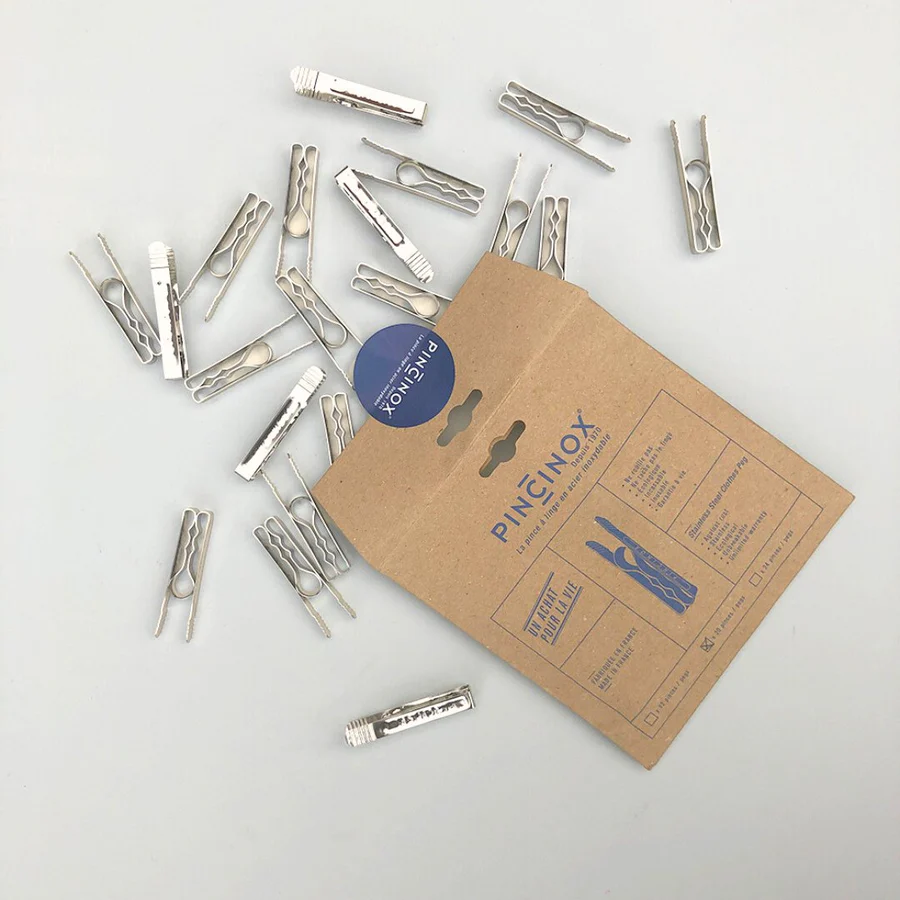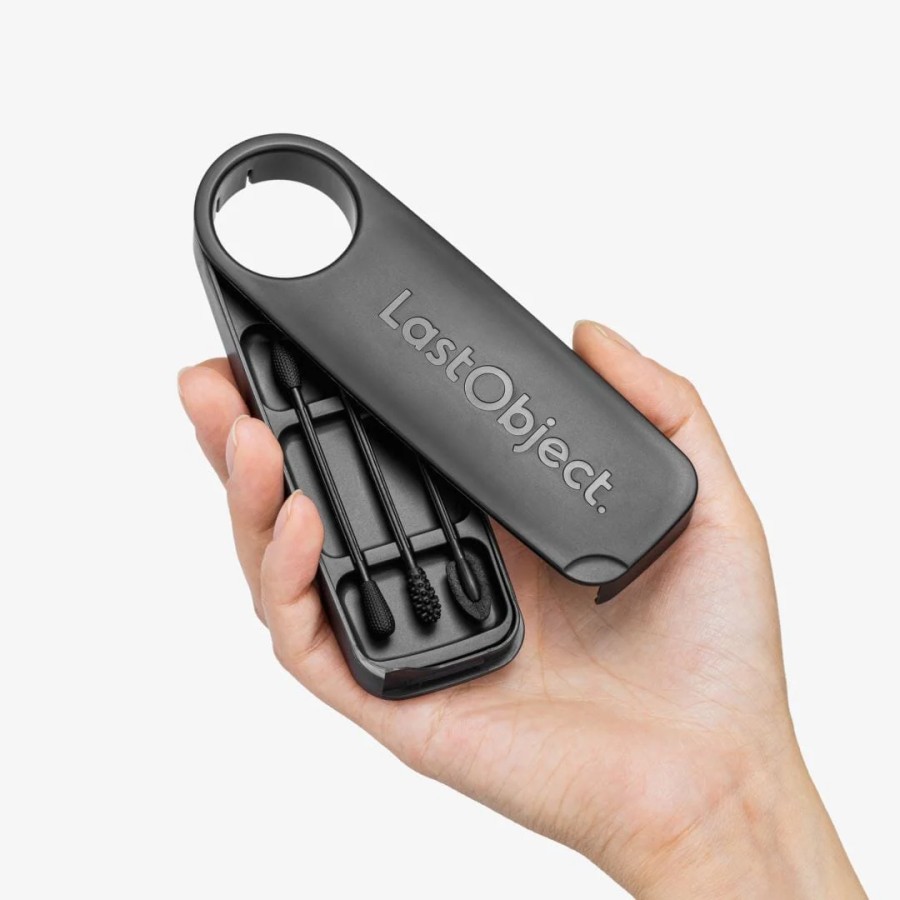A Pack of Quality Stainless Steel Clothes Pegs

Stainless steel clothes pegs are made in France, designed to last for years as they don’t rust. Made since 1970 by a family company, they are sold in paper packs of 20 or 40. Again they have no joints to snap under pressure, and can easily secure heavy wet blankets. They are also good to seal open bags of frozen peas, seed packets for gardeners or tarps for campers.
Read our laundry posts to choose a good biodegradable laundry detergent (unscented for pregnancy/nursing, babies and pet bedding).
Tips to Dry Your Clothes Quicker, Naturally
- Use a spin cycle on the washing machine (low-spin to avoid creases).
- Sort out damp if you live with it. A small dehumidifier helps.
- Don’t overfill your machine, as clothes will be more damp.
Check the Met Office website for the forecast, and try to dry clothes during the sunniest parts of the day (from 10am to 2pm) for quickest drying.
Choosing a Good Washing Line
- Retractable clothes lines (that fit flush into the wall when not in use) are the most practical and save space, and are also safer than rotary lines (which should be stored away when not in use, to prevent accidents). Minky retractable clothes line, is designed to prevent sagging.
- High & Dry Portable Washing Line is put together with two tools, in under an hour, and can hold 2 full loads (including sheets and duvet covers), then folds away in seconds. You wheel it to where you want, so you can follow the sun. It costs over £200 but is designed to last a lifetime, and saves money on tumble dryer bills.
- Indoor washing lines are good, if you have no garden or outdoor space. These work the same as retractable washing lines, you just roll them back into the wall, when not in use.
Always dry clothes in ‘wet rooms’ like bathrooms (not living rooms or bedrooms, as this could create mould). Also don’t dry clothes on radiators, this is a fire hazard.






